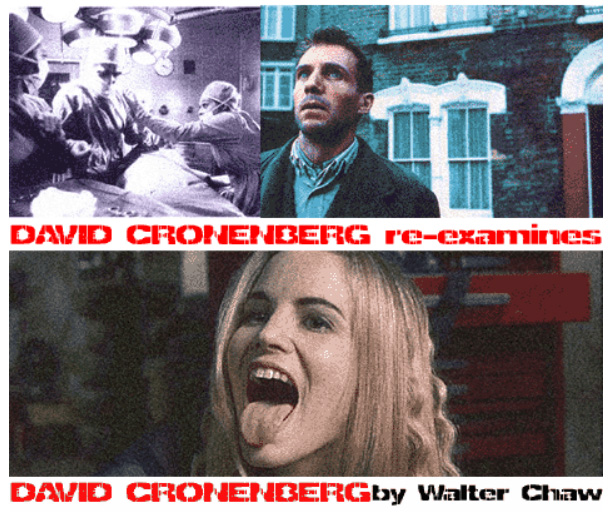***½/**** Image B Sound A Extras C+
starring William Fichtner, Katie Holmes, Jay Mohr, Sarah Polley
screenplay by John August
directed by Doug Liman
by Walter Chaw I saw Doug Liman’s Swingers at the right age to recognize it as a pretty fair portrait of me and my buddies a couple of years removed from college, playing Sega hockey against each other into the small hours and doing our best to score with as wide a variety of women as possible while responsibility loomed. The dialogue struck us as true and hilarious. Three years later, 1999, I had met and married my wife and was taking for granted a genuinely great year at the movies. I remember loving The Matrix, and The Iron Giant; Fight Club changed my life a little, The Phantom Menace broke my heart, Being John Malkovich blew my mind, and Sleepy Hollow and The Blair Witch Project provided portholes backwards and forwards into beloved genres. It seems strange to say it, but without thinking much about it, I saw more films at the theatre in 1999 than I probably had in any year since the matinee of my movie-love in high school. And my wife and I have complementary tastes, always have; in retrospect, that film cemented our relationship in those first few years makes a lot of sense. But we were drawn to it insensate.
I remember the first time we saw Go, Liman’s follow-up to Swingers (which we both liked, too), released without much fanfare and something we went to just to blow off steam after I got off tending bar one night. We wound up discussing it into the small hours. It took Jumper from 2008 before Liman, to my mind, made a genuinely bad movie, and even that had moments of tremendous, inventive energy. What’s lost a lot in the conversation is that Go is no mere rip-off of Tarantino’s Pulp Fiction from five years previous, something that’s clearer now that we’re a decade-and-a-half–holy Christ!–removed from Pulp Fiction, so that it’s that much easier to distinguish the cheap knock-offs that erupted in its wake from movies like Go that are far more unique. Pulp Fiction, see, is the very definition of post-modernism as it manifests in film: a creature that would have no consequence or meaning without intimate knowledge of its cultural parents. Go concerns that pregnant moment in your life when anything is possible, all the stakes are high, all the peaks are astronomical, and all the lows are catastrophic. In that context, it’s a film that only deepens with distance from the period it essays; it’s as much about popular culture as Donnie Darko is about time travel. Rather, Go is about is being young and stupid, and how if you survive it, you might marry someone beautiful who’ll wait for you while you get and lose a job tending bar, and end up one day writing about the movies you used to line the foundation of the rest of your life together.
Three storylines diverge, converge, convulse over the course of one long night in Go. The first follows Ronna (Sarah Polley–whose refusal to stump for this film is the first clue that for as good as she can be, she’s also a prima donna and not that worth it), a checkout girl at a mom-and-pop who happens on a scheme to make a few bucks at the expense of drug dealer Todd (a wonderfully menacing Timothy Olyphant). Todd’s credit card, meanwhile, has been stolen by Simon (Desmond Askew) to grease a road trip to Las Vegas, one featuring an exceptional use of Steppenwolf during an extended car chase that points, in its clarity and kineticism, directly to Liman’s remarkable vehicular pursuits in The Bourne Identity and Mr. and Mrs. Smith. Then you have Adam (Scott Wolf) and Zack (Jay Mohr), TV stars busted for possession and enlisted by twisted cop Burke (a fantastic William Fichtner) to entrap Ronna and help Burke get to Todd. The whole of it is edited with genuine brilliance by Stephen Mirrione, beginning with the intercutting of the Columbia Pictures logo and fanfare with flashes of a mid-film rave. Coupled with Liman’s smooth, distinct camera aesthetic, which favours lucidity over hyperactivity, Go invites comparison to Peter Berg’s Very Bad Things (1998)–and though some may take that in a pejorative way, examination of these two pictures in tandem highlights how Berg and Liman are both able to construct exceptionally intricate action set-pieces without sacrificing the strong, linear character development within their narrative’s framework.
Go is smart, funny, effervescent–heady with observations on stages of life and the levels of responsibility attendant to them, but not bogged down with too much introspection all the same. It’s buoyant, compelling, and fresh every time you watch it. Moreover, a sequence where Zack and Adam attempt to hide a body by trying to imagine their criminal activities as a scene they’re acting out on their terrible television show (trenchant as “Party of Five” heartthrob Wolf plays the Loeb to Mohr’s Leopold) puts Go in good company with its reality-testing, end-of-millennium brothers. Consider another bit that has Ronna limping back to work following her night in Hell, a lovely, quiet reference to Scorsese’s After Hours that resets business-as-usual the day after with everyone alive, few lessons learned, and only enough wisdom to pay for last month’s rent. Scripted by John August before he became Tim Burton’s go-to scribe, Go is sharp, skilled, so good that Olyphant is actually decent in it (the real mark of “Deadwood”‘s astonishing genius is that Olyphant appears great in it), and an underrated film in a banner year for cinema. Dismissed as fluff, it’s already due for revision ten years on as a movie with a tremendous amount to say about who we were right before Y2K didn’t happen and the world turned upside-down anyway. For all the blood and tits, its exuberance is a result of its breathlessness and innocence. It’s fantastic stuff.
THE BLU-RAY DISCSony brings Go to Blu-ray in a 2.40:1, 1080p transfer that’s pleasing to the eye but never pops. It’s a definite improvement on that of its DVD counterpart and suitably grainy (the term “filmic” applies here), though some of this grain looks suspiciously like noise. Overall, the image is simply not very dynamic, lacking contrast and fine detail, yet the picture’s handheld aesthetic feels honoured to me in the final wash. More muscular by half is the Dolby TrueHD 5.1 track, which reproduces Moby’s score and the film’s techno-heavy soundtrack with booming volume. Rear channels are utilized effectively for atmospherics–turn it up in the casino scenes for a few head-turners. Dating back to ’99, Liman and Mirrione join forces for a nice, collegial commentary that sports little in the way of dead air and offers enough production anecdotes (including invaluable insight into cross-cutting that presages Mirrione’s then-upcoming work on Soderbergh’s Traffic) to reward the faithful. A “making of” (6 mins.) is a disappointingly standard B-roll-and-soundbites exercise while “Deleted Scenes” (14 totalling 25 mins.) are SD and basically comprised of alternate takes of familiar material. Three music videos (“New” by No Doubt, “Magic Carpet Ride” the remix by Philip Steir, and “Steal My Sunshine” by Len) plus trailers in full HD for The Da Vinci Code, Final Fantasy VII, Ghostbusters, “Damages”, and A River Runs Through It round out the presentation.
102 minutes; R; 2.40:1 (1080p/MPEG-4); English 5.1 Dolby TrueHD, French 5.1 Dolby TrueHD, Portuguese 5.1 Dolby TrueHD; English, English SDH, French, Spanish, Portuguese subtitles; BD-50; Region-free; Sony

![Go [Blu-ray]](https://m.media-amazon.com/images/I/51wmlzvoCRL._SL500_.jpg)



